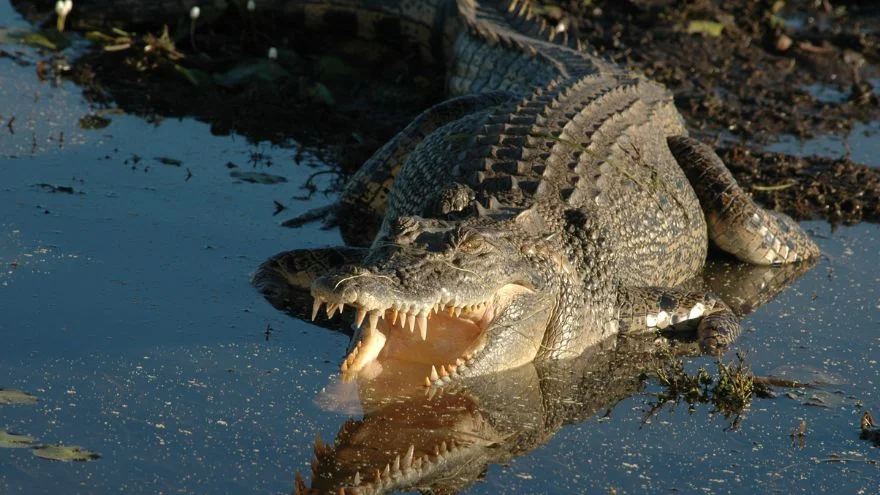Fiji is a tropical paradise, and who wouldn’t want to visit the country?
The 300 islands are filled with sand beaches, palm trees, delicious cocktails, and a lot of tourist attractions.
Fiji also boasts abundant wildlife because of its tropical climate. While this has numerous advantages, some creatures are dangerous and should be avoided.
Some of the most dangerous animals in Fiji include centipedes, mosquitos, poisonous snakes, and more.
These creatures are not dangerous because they are inherently evil, but any encounter between them and humans can be damaging to humans.
Here’s a list of dangerous creatures living in and around Fiji, including important wildlife safety tips at the end of the list to make your trip enjoyable.
What are the Most Dangerous Animals in Fiji?
1. Brown Centipede

- Scientific Name: Lithobius forficatus
- Habitat: Soil, rock, logs
- Threats: Painful and venomous bite, which can cause allergic reactions and nausea
The hot Fiji climate makes a good home for crawling animals, including centipedes. There are many centipede species in Fiji, of which we singled out the brown centipede.
These centipedes may not be the most dangerous on this list, but they pose their own risk.
A centipede has what is termed “poison claws,” which it uses to inject venom into a prey while holding it down. This venom also affects humans, though on different levels.
The effect ranges from rashes to fever. Some people with allergies will experience more effects, but fortunately, death cases are rare.
2. Aedes Mosquito
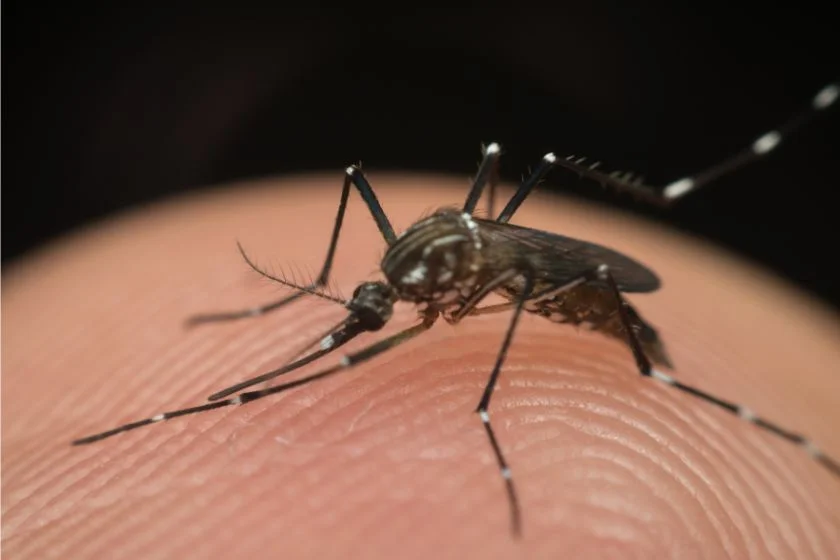
- Scientific Name: Aedes aegypti
- Habitat: Tropical regions
- Threats: Disease-carrying bloodsuckers that can transmit diseases such as dengue fever, Zika virus, and chikungunya
The Aedes mosquito is the predominant mosquito species in Fiji.
You may not contract the Zika virus or even malaria, that’s often associated with mosquitoes.
However, the Aedes mosquito puts you at risk of contracting dengue fever, an illness that has been a part of Fiji since the 1970s.
This year, there have already been more than 1,000 cases of dengue fever, and in years past, there were some outbreaks.
Your kit should contain mosquito repellent to keep these insects from biting you.
3. Yellow-bellied Sea Snakes
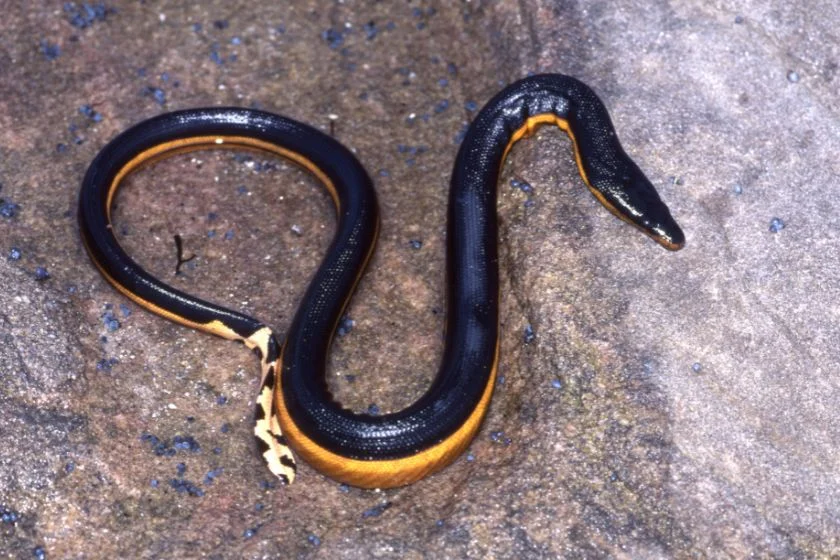
- Scientific Name: Hydrophis platurus
- Habitat: Tropical ocean
- Threats: Highly venomous and aggressive, capable of delivering a lethal bite to humans
The yellow-bellied sea snake is just one out of many species of sea snakes living in Fiji and can also be found around the surrounding waters.
It is so named because it has a yellow abdomen; while that is remarkable, you should avoid this species.
All sea snakes are venomous but not usually aggressive. One sea snake known as the banded sea krait is described as gentle and placid.
That said, if these snakes feel threatened, they will bite, and you would not like the outcome.
4. Cane Toad
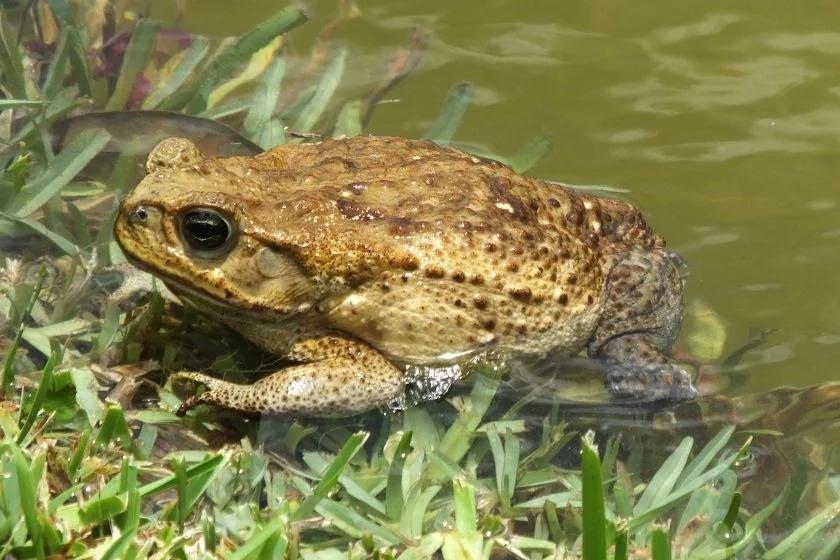
- Scientific Name: Rhinella marina
- Habitat: Tropical, semi-arid
- Threats: Toxic skin secretions that can cause hallucinations, seizures, and even death if ingested
The cane toad doesn’t look scary or dangerous, and if you never get close to it, you won’t have any problems.
It has no venom, spikes, or stinging mandibles. What makes it dangerous, then? It’s the body.
The cane toad’s back has glands that secrete poison, its defense mechanism against predators.
If a human ingests this poison, it can cause hallucinations, vomiting, seizures, convulsions, and even death through cardiac arrest.
To be safe, you should not touch the cane toad.
5. Fire Coral
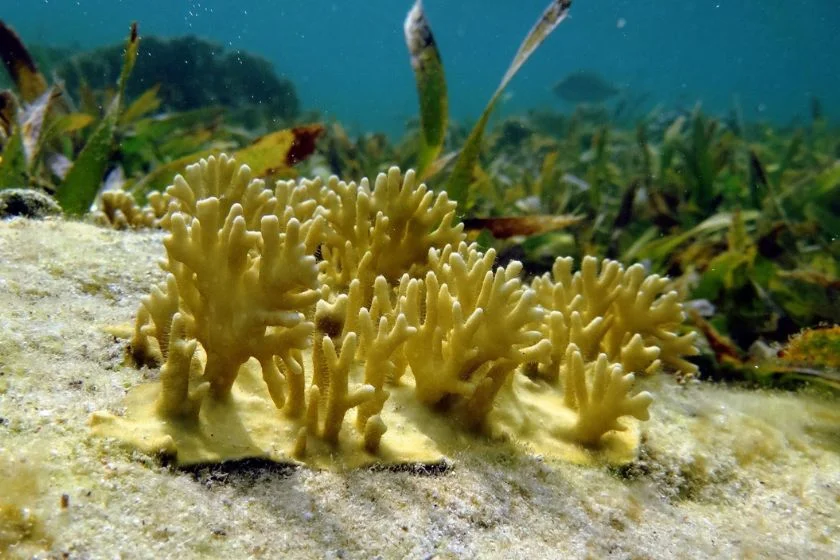
- Scientific Name: Millepora
- Habitat: Shallow reefs
- Threats: Painful and potentially life-threatening stings, which can cause intense burning and swelling
The fire coral can be found in tropical waters, and despite the name, it is not a true coral. The fire coral is more related to hydras than the coral.
You may not encounter the fire coral if you’re not a diver, but if you plan on going underwater, you should know the risks involved with a fire coral.
Even a little contact with the fire coral is enough to leave you in pain.
The pain is caused by the stinging that occurs if you touch the tentacles, and it can last for days and even weeks.
The fire coral is not lethal unless you have an allergy. To be safe, do not swim too close to corals and reefs.
6. Saltwater Crocodile
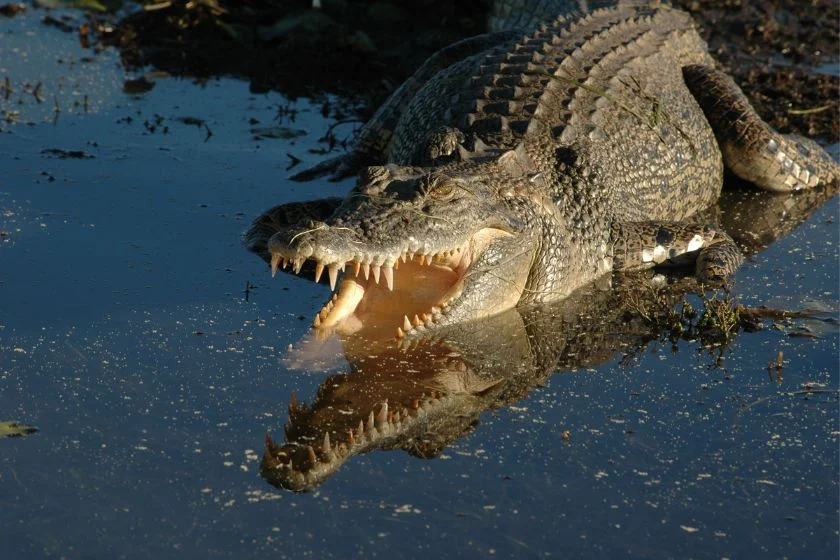
- Scientific Name: Crocodylus porosus
- Habitat: Saltwater
- Threats: Powerful predators with a strong bite, known to attack humans when provoked or defending their territory
If you ever meet a saltwater crocodile, ensure it doesn’t see you.
This reptile has no “live and let live” relationship with humans and will attack without provocation.
It is an apex predator and doesn’t fear anyone, including humans.
Saltwater crocodiles are considered more dangerous than sharks, and history recorded that they even confronted soldiers during the 2nd World War!
There are different online resources on surviving an encounter with a crocodile, but prevention is the best solution.
Fortunately, there aren’t many yet in Fiji, so you can always ask questions when you want to visit an area that may have a crocodile.
7. Estuarine Stonefish
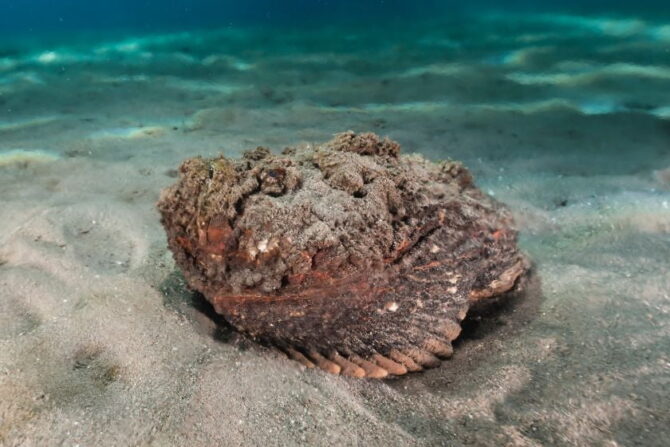
- Scientific Name: Synanceia horrida
- Habitat: Rivers, coral reefs
- Threats: Venomous spines that can cause extreme pain, paralysis, and even death if not treated promptly
The Estuarine stonefish is one of several stonefish species. The looks alone are enough to be wary of this fish, and you should be.
Stonefishes are highly venomous, and they’re considered the most venomous among sea creatures.
The crazy part is that you may not sight it in water as it is a master of camouflage. Once you step on its fin, however, it injects its venom into you.
The stonefish venom is fatal, and though there is an antivenom, the poison can still put the victim at risk.
You should protect yourself with reef shoes when walking in the water.
The stonefish can survive outside water for 24 hours, so be cautious while walking on the beach.
8. Portuguese Man o’ War
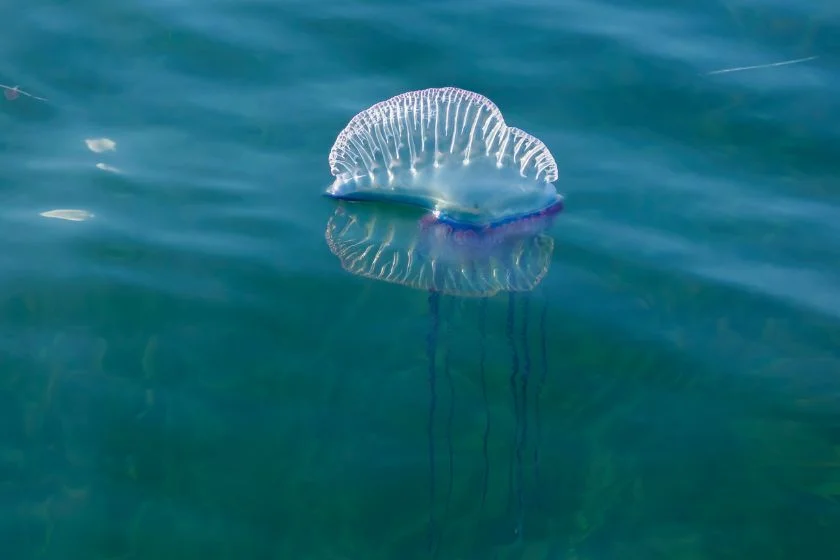
- Scientific Name: Physalia physalis
- Habitat: Tropical and subtropical waters
- Threats: Painful and potentially life-threatening stings, which can cause intense burning, swelling, and difficulty breathing
Also called the man-of-war, this fish is often thought to be a jellyfish species. However, it is a Siphonophore rather than a jellyfish.
The Portuguese man o’ war has tentacles that it uses to paralyze and kill small fish. When a human comes into contact with the tentacles, such a person will be affected.
Effects include welts, fever, shock, respiratory shock, and even death. A detached tentacle is still dangerous, the same as a dead one.
Do not touch a Portuguese man o’ war, and protect your feet when going to the beach.
9. Cone Snails
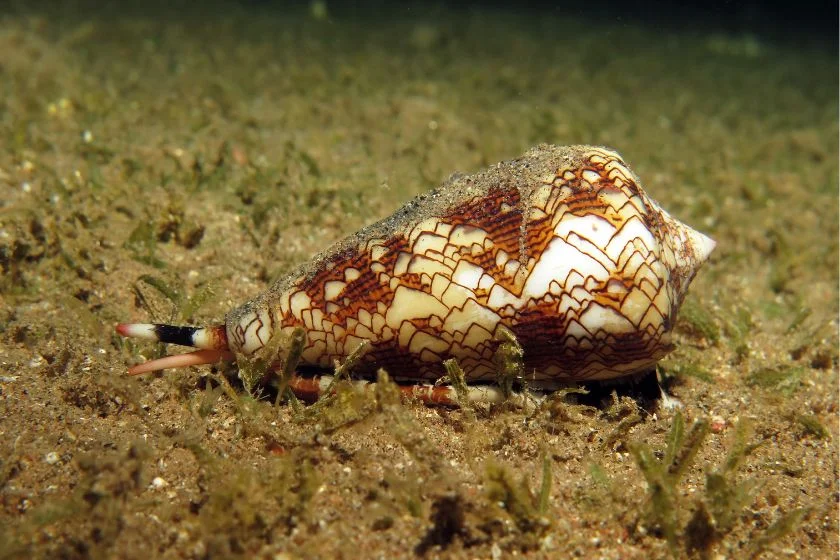
- Scientific Name: Conus
- Habitat: Tropical sea, ocean
- Threats: Venomous harpoon-like teeth that can cause paralysis, respiratory failure, and even death in humans
Beautiful shells, right? The cone shell has intricate designs, but all that glitters isn’t gold with this mollusk.
It is also called the cone snail because of the creatures living inside the shells, and these creatures are dangerous.
Also known as cone snails, cone shells are highly venomous, unlike the usual snail species we see.
They are also carnivores and can attack when provoked, which tends to be often as swimmers are drawn to the shells.
Think twice before picking up any lovely shell you find while swimming.
10. Greater Blue-ringed Octopus

- Scientific Name: Hapalochlaena lunulata
- Habitat: Rubble, reef, sand
- Threats: Small but venomous, can cause paralysis and death
The last but not least dangerous animal on our list is the greater blue-ringed octopus, one out of four blue-ringed octopus species.
It is considered one of the most toxic marine animals, and its venom is high.
It can kill a human fast, and with no antidote for it, getting injected by the blue-ringed octopus is a death sentence.
Fortunately, this octopus lives a solitary life and hardly comes out except when searching for a mate.
Only divers are at risk of coming across this octopus species.
Fiji Wildlife Safety Tips
Being in Fiji is a lovely experience. It gives you an excellent opportunity to wind down and get in touch with nature, away from the hustling of urban life.
That said, with the dangerous animals we’ve mentioned, you should take some safety precautions to enjoy your trip more.
Here are some tips we offer:
- Wear appropriate footwear outdoors, especially at the beach, in forests, and at night.
- Keep an eye out for any dangerous animals and avoid them. In the case of the saltwater crocodile, we suggest you avoid entirely going where it might be located.
- If possible, get a guide.
- Get an insect repellent to rub before stepping out of the house, and sleep under a mosquito net.
- Do not try to feed, touch or startle any animal, even those not deemed harmful.
Related Questions
Are there tigers and lions in Fiji?
There are currently no reports of lions and tigers in Fiji.
Are there poisonous snakes in Fiji?
Fiji has a good number of venomous snakes, so you should wear strong footwear if you step into an environment where snakes might be in.
Snakes are good at camouflage, and you may step on one without knowing.
Are there dangerous spiders in Fiji?
There are some big spiders in Fiji, but none are highly toxic to humans.
Even the tarantula that is somewhat venomous doesn’t leave any lasting harm on humans. Do not touch any spider, though.
What is the most dangerous animal in Fiji?
The saltwater crocodile is considered the most dangerous animal in Fiji because of how willing it is to attack humans (and how good it is at it).
However, the saltwater crocodile is rare in Fiji, so many people place the stonefish as the most dangerous.
Is Fiji a safe place to travel to?
Traveling to Fiji comes with a lot of benefits, from the beautiful sights to the climate. However, there are some challenges. Dangerous animals and a high crime rate are some examples.
Final Thoughts
Due to its tropical climate, the most dangerous animals in Fiji are a major part of the abundant wildlife in the region.
So, is it still a good idea to go there? The answer to that is a yes.
While you should be careful in certain places, Fiji remains a popular tourist choice.
With safety tips and tools in mind, you can have a lovely experience in Fiji.
